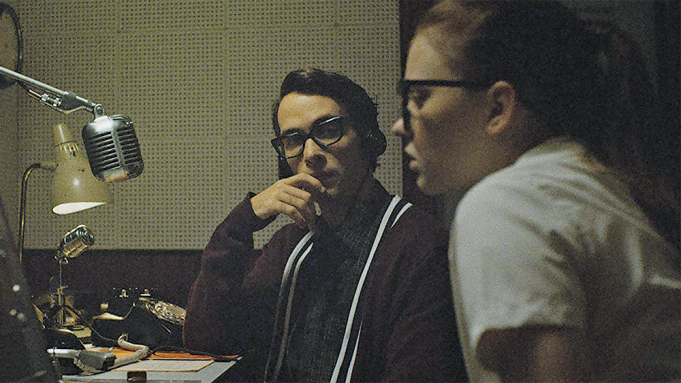REVIEW: Under the Radar: “The Vast of Night”
“The film, while some could see it as slow-moving, I found enthralling, and by the end of the film was on the edge of my seat,” writes Web Editor Marcy Wilder.
January 31, 2021
Editor’s Note: This review is an extended version of the review originally in the Jan. 18 “Catching You UP” newsletter, which you can subscribe to here.
Flashing lights. Weird noises coming from the radio. Old military stories about cover-ups. Frantic calls that cut off. There’s something in the sky.
“The Vast of Night” is a 1950s New Mexico period piece from debut director Andrew Patterson. It premiered in January of 2019 at the Slamdance Film Festival where it won the Best Narrative Feature Audience Award and then was distributed by Amazon Prime in May of 2020. The film has also won the Grand Jury Prize at 2019’s Overlook Film Festival, the Special Cinematography Award at 2019’s Hamptons International Film Festival, and was nominated for more awards at other festivals.
The film is a tribute to “The Twilight Zone,” and starts out with a slow-zoom of a 1950s television playing a very similar variation of “The Twilight Zone” opening credits; with the voice of someone who may as well be Rod Serling.
The entire film lasts the time of a high-school basketball game in a very small town, with the film primarily focusing on two characters’ experiences with the strange event happening. The film, while some could see it as slow-moving, I found enthralling, and by the end of the film was on the edge of my seat.
The cinematography of “The Vast of Night” is outstanding. The film shifts into a 1950s television screen that hammers home the “Twilight Zone” feel of the movie and is used mainly in transition sequences.
One of the most impressive sequences starts at the switchboard center, which is a device that manually connected calls to the location they needed to go in the 1950s. The scene travels through the entire town, through the basketball game, and then into the radio station. During the Cast & Crew Q&A at the Toronto International Film Festival, the director spoke about finding an 18-year-old farmer in the Texas filming location with a go-kart they had him drive the entire length of the town with the cameraman laying down top to achieve that shot. With the low-budget this movie had, that is infinitely impressive.
Another stunning sequence is at the beginning of the film, where the camera holds for about 10 minutes on Fay (Sierra McCormick) using the switchboard and trying to figure out what sound she’s hearing. This film is filled with either visual or audio storytelling, and whenever someone is delivering a longer monologue, the camera holds on to them. You get so engrossed in what the person is saying you don’t even notice that the camera hasn’t moved or that there hasn’t been a cut in a while. This is the case of Gail Cronauer’s monologue as Mabel Blanche, where both you and the main characters are just watching her tell this story about her life.
My favorite sequence in the film is between Everett (Jake Horowitz) and Billy (Bruce Davis) with Billy as a man calling into Everett’s radio station. As Billy tells his story, the video fades in and out of Everett’s face, with some moments in complete darkness and as if you were a person listening to the radio yourself. It was breathtaking to watch.
The sound design of this movie is gorgeous. It shifts between period-typical rustic guitars to match the small-town setting and beautiful string orchestrations that start small and then swell. The most important sound is the mysterious sound from the radio, and it’s exceptionally chilling. The sound also captures the feel of the 1950s, with the appropriate amount of static in it but still with voices being understandable.
I loved this movie, and if you want a piece of masterful storytelling and atmosphere to spare, I would highly recommend it.
Andrew Patterson directs “The Vast of Night” which you can find on Amazon Prime.
Marcy Wilder is the web editor for the University Press. For information regarding this or other stories, email mwilder2019@fau.edu or tweet her @MarcyJWilder.





